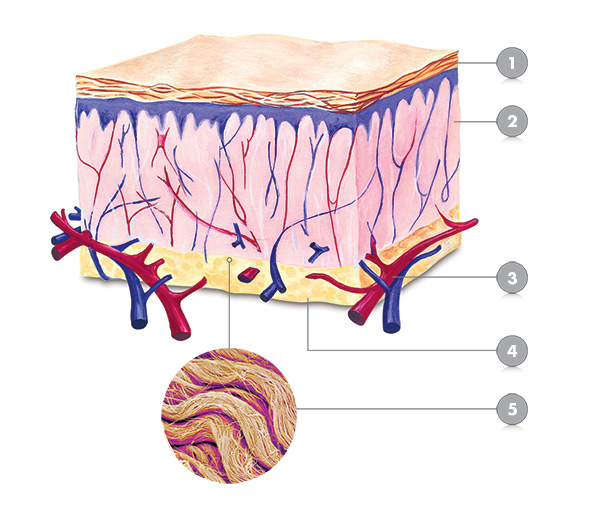Skin Structure
Skin is our body’s largest organ, weighing in at over 3kg, and what an amazing job it does for us. It acts as a waterproof barrier to prevent water loss, insulates the body against extremes of temperature, protects tissues from damaging sunlight, and is our first defence against bacterial infection. It can stretch when we move, and when it gets damaged it can heal itself. So a quick look at the structure of skin might be interesting:
1. Epidermis
This outermost layer consists of dead cells that are continuously being shed and replaced by new cells produced in the basal level, which are hardened with a protein called keratin before moving to the surface.
2. Dermis
This is the thickest layer and is made up of a strong matrix of two types of protein fibres called collagen and elastin. Collagen is responsible for the skin’s firmness and makes up 70% of the dermis, whilst elastin gives skin its elasticity.
3. Capillaries
Healthy skin relies on a mass of tiny blood capillaries to oxygenate and nourish the cells and a healthy circulation ensures the skin remains hydrated and healthy.
4. Subcutis
This base layer has a seam of subcutaneous fat which can be used as fuel but also works as insulation against heat loss and cushions the body against bumps.
5. Collagen & Elastin
These two types of protein fibres are made by cells in the dermis in a process of continuous regeneration, with old worn out fibres being broken down and then replaced with fresh collagen and elastin fibres. This balance involves enzymes, called Matrix Metalloproteinase (MMP’s), which break down the protein fibres, but their action is carefully controlled.
